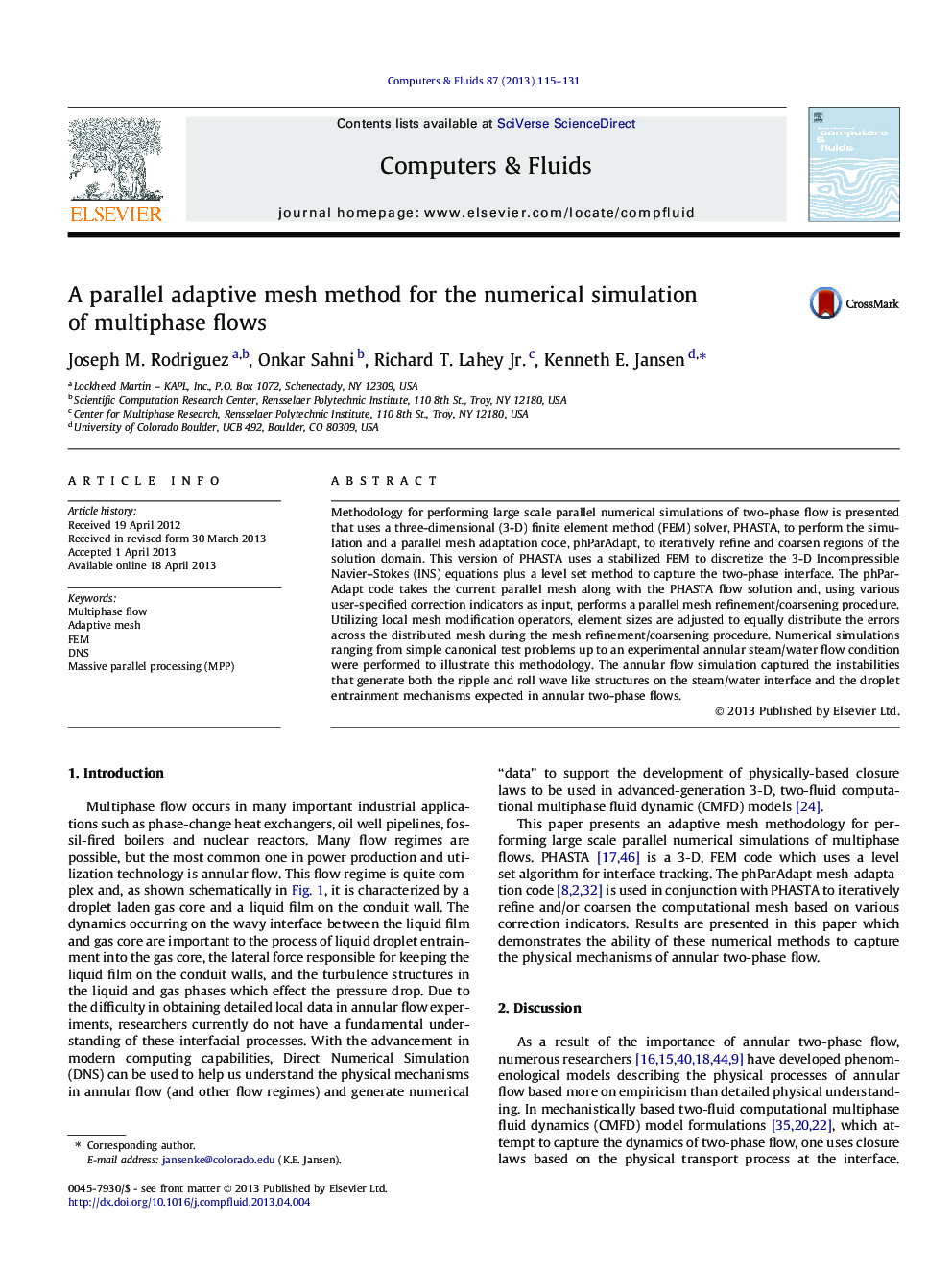| Article ID | Journal | Published Year | Pages | File Type |
|---|---|---|---|---|
| 762208 | Computers & Fluids | 2013 | 17 Pages |
Methodology for performing large scale parallel numerical simulations of two-phase flow is presented that uses a three-dimensional (3-D) finite element method (FEM) solver, PHASTA, to perform the simulation and a parallel mesh adaptation code, phParAdapt, to iteratively refine and coarsen regions of the solution domain. This version of PHASTA uses a stabilized FEM to discretize the 3-D Incompressible Navier–Stokes (INS) equations plus a level set method to capture the two-phase interface. The phParAdapt code takes the current parallel mesh along with the PHASTA flow solution and, using various user-specified correction indicators as input, performs a parallel mesh refinement/coarsening procedure. Utilizing local mesh modification operators, element sizes are adjusted to equally distribute the errors across the distributed mesh during the mesh refinement/coarsening procedure. Numerical simulations ranging from simple canonical test problems up to an experimental annular steam/water flow condition were performed to illustrate this methodology. The annular flow simulation captured the instabilities that generate both the ripple and roll wave like structures on the steam/water interface and the droplet entrainment mechanisms expected in annular two-phase flows.
